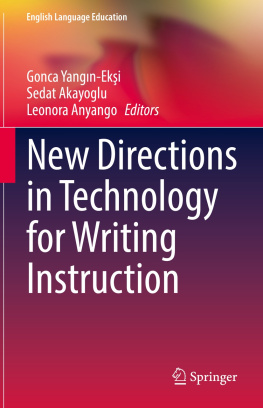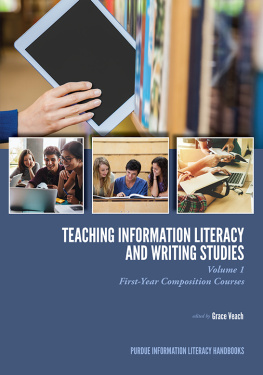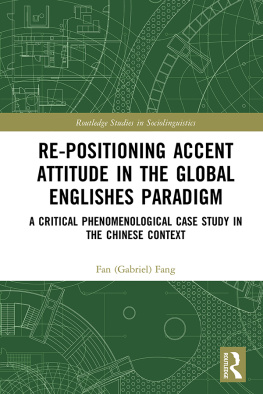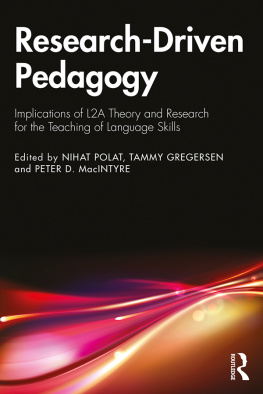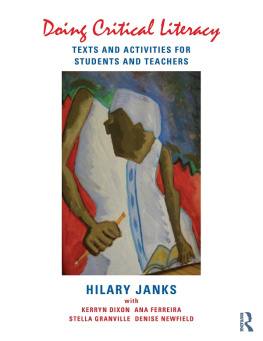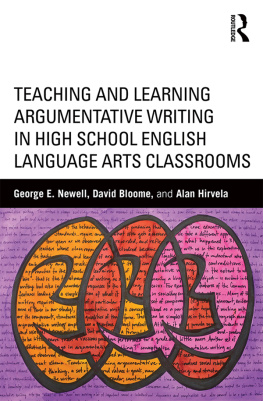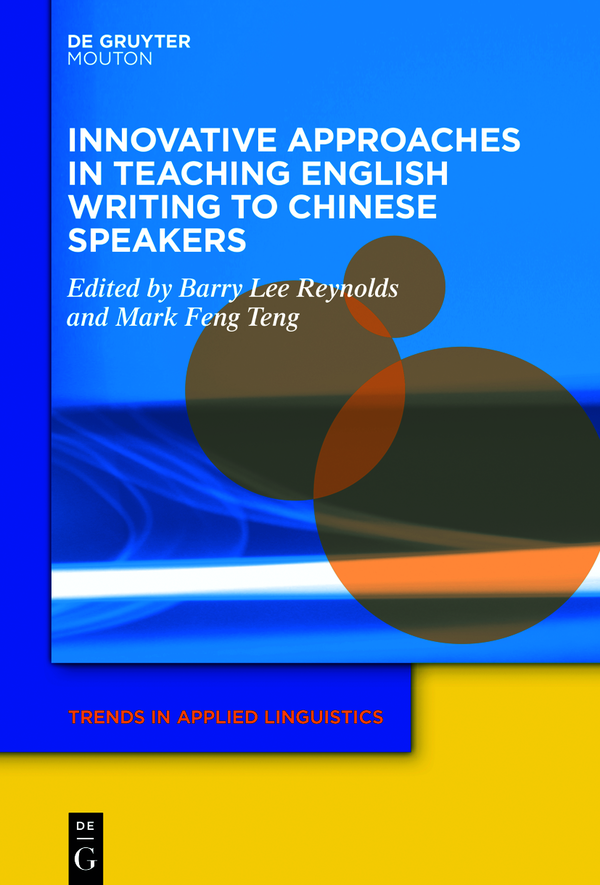The Deutsche Nationalbibliothek lists this publication in the Deutsche Nationalbibliografie; detailed bibliographic data are available on the Internet at http://dnb.dnb.de.
Abstract
Whether discussing the teaching or learning of English writing, most educators and learners alike agree that it is the most challenging language skill to master. While contexts may differ in terms of purpose or motivation for learning to write in English, contexts may also share similar challenges. This is the exact situation with learners in Chinese speaking regions. From primary school to graduate school, learners are struggling with similar yet contextually unique difficulties in mastering English writing. These learners require instructional support informed by a multifaceted research literature covering the fields of second language acquisition, reading research, vocabulary research, bilingual processing, sociocultural factors, language assessment, and language policies. The complexity of English writing development was the seed of our attempt to characterize second language writing instruction for Chinese speakers in different yet historically related regions. This chapter juxtaposes the similarities and differences in English writing instruction in mainland China, Hong Kong SAR, Macau SAR, and Taiwan. With a focus on current innovative practices and research trends, this chapter provides a starting point for thinking about what is important to understand English writing instruction in the regions.
Keywords: Taiwan, Macau, Hong Kong, China, English Writing, Chinese,
Introduction
English, the de facto lingua franca of the global world, is widely taught as a second/foreign language in primary schools, secondary schools, and universities ().
Chinese speakers are the largest group of English language learners around the world (). This edited volume, drawing upon collected studies targeted at primary, secondary, and tertiary-level education in mainland China, Hong Kong SAR, Macau SAR, and Taiwan, aims to provide teachers and practitioners with implications to enhance the English writing performance of first language (L1) Chinese speakers. As the main audience of this book is English writing teachers in Chinese speaking regions that teach Chinese speakers, our construals of Chinese speakers and Chinese speaking regions should be clearly operationalized. Below we first define Chinese speakers before moving on to a discussion of English writing teaching in Chinese speaking regions.
Chinese speakers
Chinese is a family of languages, not a single language (). In sum, the use of Chinese Speakers is encompassing and not delimiting.
Chinese speaking regions
Second language writing teachers in Chinese speaking regions have a number of approaches in which to orient their classroom teaching. For example, teachers may focus on language structures, text functions, themes or topics, creative expression, composing processes, content, or genre and contexts of writing (). With this thought in mind, we now turn our discussion to the current practice of writing instruction in mainland China, Hong Kong SAR, Macau SAR, and Taiwan our operationalization of Chinese speaking regions. We have made effort to cite published research when providing descriptions of the teaching of English writing in the different regions; however, we acknowledge that our discussion may appear underdeveloped due to the lack of focused practical investigations currently available in the literature.
3.1 Mainland China
Accompanied with the globalization of writing theories and pedagogies in the western context, mainland China has imported knowledge in many areas, including writing pedagogies. After , English teachers in China have been trapped in an English teaching tug-of-war (p. 299). It is not surprising that teaching EFL writing in China is not an easy task.
The management style is a main difference between Chinese and western education cultures; the top-down system in mainland China controls power and decision-making, resulting in a sizeable number of teachers stress (, p. 98). English writing teachers need more support when facing challenges in facilitating writing teaching practices, handling students needs in enhancing writing, and dealing with instructional constraints in local contexts.
When we flip through many language textbooks in mainland China, it is not surprising for us to find the majority are theme-based. The themes of the textbooks are about one aspect in our social life, and each unit is about one theme. Each unit commonly contains two passages. Following the two passages are some related grammar, vocabulary, translation and writing exercises. Examination of the textbooks show them to be a good example of a graded, controlled instruction that emphasizes the importance of correct grammar and vocabulary usage. One hidden agenda that can be uncovered from the analysis of these textbooks is that teachers may lead students to focus more on correct grammar and vocabulary usage, even for learning how to write. As documented by ).
The situation of teaching English writing in mainland China deserves more attention. While writing teachers have to maneuver in a limited pedagogical space, students may just focus more on the correct form rather than how to develop thoughts. We acknowledge the increasing need to have more exposure to writing theories and approaches, and experiment with more writing pedagogies in mainland China. This will never be an easy road to travel; we need to reflect on how to make writing approaches innovative in mainland China, especially for young learners whose first influential experiences in English writing can either inspire or discourage these learners for years.
3.2 Hong Kong SAR
Hong Kong is a special administrative region (SAR) of the Peoples Republic of China with a different educational system from mainland China. Although the teaching of Putonghua was stressed after the handover in 1997, the English language is still commonly acknowledged as an important language in many areas, including business, government, higher education, and other professional sectors. Students start learning English when they enter kindergarten around the age of three. Teachers teach English as a compulsory subject from primary and throughout secondary education; English is the medium of instruction in higher education. In some primary and secondary schools, English is also the medium of instruction.
Despite the significant role of English, implementing innovative teaching approaches for English writing has never been easy. At the primary school level, the Education Bureau recommends five to eight periods of English instruction per week. Instruction focuses on several main components: providing greater opportunities for learners to use English for purposeful communication both inside and outside the classroom; making use of learner-centered instruction to encourage learner independence; making greater use of literary/imaginative texts to develop critical thinking and encourage free expression and creativity; and promoting strategies, values and attitudes that are conducive to effective, independent and life-long learning (). Although the Hong Kong government promotes the use of a variety of resources in the teaching of English, most schools rely on commercially produced English language textbooks that focus mainly on the above-mentioned components. The Education Bureau has encouraged the use of information technology in the English curriculum to supplement the textbooks. However, innovative approaches in the teaching of English writing are still insufficient in many schools. When it comes to the secondary school level, the Education Bureau has increased English instruction periods to seven or eight periods from the recommended five to eight periods in primary education. However, instruction still focuses more on dictation, grammar, speaking, reading, and writing. Hence, given the limited time that is spent writing, teaching writing is not so satisfactory at either the primary or the secondary levels.



